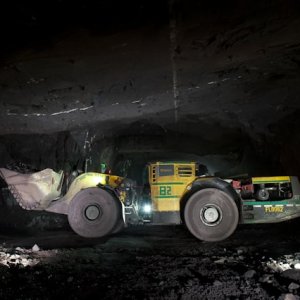
A New Era Dawns and Miners Will Either Adapt or Lag Behind
In the era of technological innovations, the rule is simple: adapt or lag behind. In a traditional industry like mining, where competitivity is about having efficient and productive operations, resistance to change may be an issue. Yet, to turn operational efficiency into a reality, technology is indispensable. “It is paramount to bring new thinking and operational models into the mining industry, even if it comes from adjacent industries, so we can create a more integrated and thriving business ecosystem,” says Jari Moilanen, Director of Digital Plant Outotec.
According to EY’s 2017 Productivity in Mining report, productivity is on the decline, driving operators to dig deeper and seek integrated solutions to boost their operational efficiency. “Companies need to adapt quickly to the changing environment or risk becoming noncompetitive in an ever-competitive market,” says the report. Bradford Cooke, CEO of Endeavour silver, highlights the issue, pointing to the harm the company’s Guanaceví mine suffered in 2017 due to flooding caused by the lack of integration between pumping, ventilation and electrical systems. “As a result, the mine fell behind on its production guidance for the year,” Cooke says.
Even after recovery, these sorts of mistakes can be costly for operators, both in financial and reputational terms. “Every hour of downtime can cost companies millions of dollars,” says Heriberto Salas, Latin America Sales Director at Eagle Burgmann. For his company, “integrated solutions mean not only provision and manufacture of sealing technology but also understanding the equipment, engineering and mechanical aspects of the operations.” This means that a holistic approach to mine operations becomes crucial to drive productivity levels.
Mining machinery providers believe it is key to automate processes to envision the whole production picture. For example, SKF helps mining companies switch their models to IIoT and Industry 4.0. “The trend is moving toward the development and implementation of sensors at mine sites and with mining machinery,” says Nacip Fayad, Industrial Sales Director at SKF Mexico.
According to EY, when focusing on productivity, managers often make operational decisions that prioritize product outcome, overlooking other measures such as total material moved. But gauging productivity levels by one variable can be counterproductive as it disregards certain factors, such as the geological conditions of ore quality, that affect the output. Coming up with an objective measurement of productivity levels becomes as important as establishing operational efficiency.
One alternative approach to measuring productivity through labor evaluates workforce efficiency as the total material moved per person in a given period. Another key indicator is the overall equipment effectiveness (OEE), which calculates equipment productivity times and delays. According to Vorne Industries, a company specialized in enhancing manufacturing productivity, OEE is the gold standard for measuring productivity. “It identifies the percentage of manufacturing time that is truly productive,” the company says. “An OEE score of 100 percent means you are manufacturing only Good Parts, as fast as possible, with no Stop Time. In the language of OEE that means 100 percent Quality (only Good Parts), 100 percent Performance (as fast as possible), and 100 percent Availability (no Stop Time).”
Technology is not the only input to develop, as new systems will not entirely work on their own; they require an adequate operating team. For many Mexican explorers and operators, the node pushing any innovation must be human capital to ensure a sustainable and responsible productivity improvement. “The industry will always seek to cut costs and drive up productivity,” says Jesús Herrera, Director General of Detector Exploraciones. “I believe that productivity is more dependent on human capital and the training that companies provide. If the mining industry invests in the development of its people, it will achieve higher returns. As our costs will also go down, we will be more competitive and our clients will give us more work,” he says.
A cost-centered view of productivity can also negatively impact the environment, Herrera adds. “It is also imperative that we not lower our costs at the expense of the environment,” he warns.
















